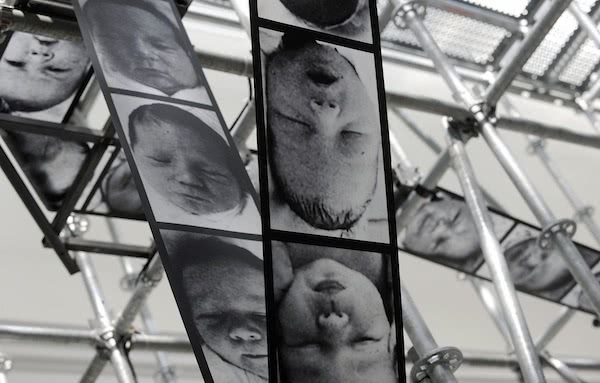We are not replaceable, but we will be replaced,” said visual artist Christian Boltanski when discussing his work, Chance,in 2011. This remarkable installation will be presented at Carriageworks as part of next year’s Sydney Festival in what will be the French artist’s first major solo exhibition in Australia. BRAG spoke to Carriageworks Director Lisa Havilah about this exciting project by “one of the most significant artists practising in the world today”.
“[Chance is] a very large-scale installation that has been designed specifically for Carriageworks’ main public spaces. It measures about 36 metres by eight metres by three metres, so it’ll take over and completely dominate Carriageworks,” says Havilah. The massive site-specific work is constructed of intricate scaffolding littered with images of newborn babies sourced from birth announcements made in Polish newspapers. Not only can visitors walk beneath the scaffolding, but they can also stop-start the installation’s progress. This interactivity is echoed in another component of the work – a game, which recalls a poker machine. When the viewer presses the button, the display will randomly assemble three sections of different human faces – foreheads, eyes and mouths – into one distorted amalgamation. If these elements happen to align correctly, you will be rewarded with a prize. The exhibition also includes two “very large-scale digital counters that count the number of people that are born into the world and that die in the world everyday”.
Chance first debuted at Venice Biennale 2011, but for its Sydney Festival iteration the work has been reconfigured in response to the specific spatial properties of Carriageworks. “People seem to respond very strongly and people seem to be very hungry for those types of visual art experience,” says Havilah. “Because of the scale of it and the nature of what it is about and because of its immersive nature [Chance] will make you reflect on your own morality and your own place in the world.”
Chance continues Boltanski’screative trajectory by exploring the themes of memory, loss, commemoration, birth and death. The artist’s use of photographs depicting newborns dislocates barriers between public records and the private experiences of individuals. The work’s rapidly shifting counters also present said newborns as statistics unto themselves within the life cycle of births and deaths. In essence, Chance reflects Boltanski’s core philosophical belief that our existence and how we carry it out depends entirely on chance. According to Boltanski himself, “The basic idea is that we are linked to chance from the moment our parents made love. If they had made love a few seconds before or after we would be different. It is a mere technical and temporal matter: we are just the result of chance. There is nothing mystical about our existence.”
BY KATE ROBERTSON
Christian Boltanski’s Chance presents at Carriageworks for Sydney Festival 2014 from January 10-29.


































